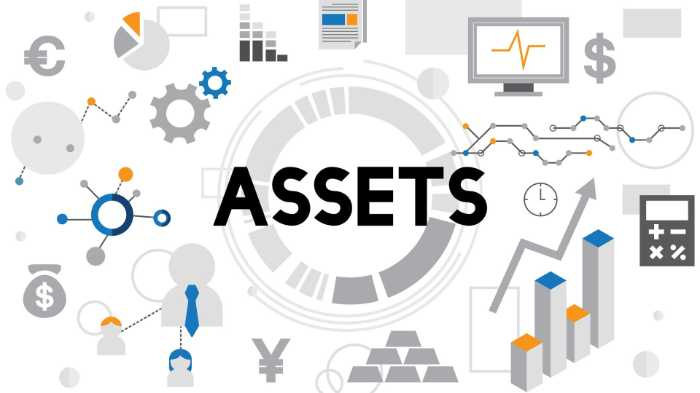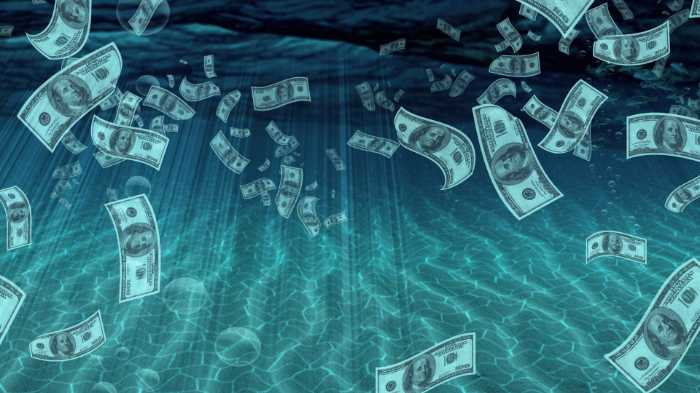
What is an environmental economy? It is the study of how economic policy and regulation affect the environment. In other words, it looks at how our economy affects the planet. This is an important topic because we need to be aware of how our actions can impact the environment. In this blog post, we will discuss some of the key concepts related to environmental economics. We will also look at some examples of how green policies have affected our economy in both positive and negative ways.
- What is environmental economics?
- What 4 components make up environmental economics?
- 1. Scarcity
- 2. Uncertainty
- 3. Externality
- 4. Sustainability
- How do these components affect our economy?
- What are the implications of these concepts?
- What is the primary goal of environmental economics?
- What is the role of environmental economists?
- What is ecological economics?
- What is natural resource economics?
- What is the role of the economy in the environment?
- What are the environmental contingent liabilities?
- What are environmental assets?
- 1. Provisioning
- 2. Regulating
- 3. Supporting
- 4. Cultural
- Positive impacts of green policies on our economy
- 1. Job creation
- 2. Reduced pollution and health care costs
- 3. A more sustainable future
- 4. Cost-saving for businesses
- 5. Combatting climate change
- 6. Waste reduction
- Negative impacts of green policies on our economy
- 1. Increased cost of doing business
- 2. Job losses in certain industries
- What are green jobs?
- Conclusion
- FAQs
- Is environmental economics a subject?
- How can economic analysis help the natural environment?
- What are some examples of environmental economics policy?
- What are the benefits of environmental economics?
- How does environmental economics address market failure?
- What are some criticisms of environmental economics?
- What are some environmental concerns of negative externalities?
What is environmental economics?
Environmental economics is a branch of economics that focuses on the cost-benefit analysis of environmental policy. It typically includes the study of how economic activity affects the environment, as well as the study of how environmental problems can be mitigated or addressed through policy. Environmental economists often use tools from game theory and microeconomics to analyze environmental issues, and they often work closely with environmental scientists in order to understand the full scope of environmental problems.
Because environmental economics is such an interdisciplinary field, it can be difficult to distill it down to a single definition. However, at its core, environmental economics is about understanding the trade-offs between economic activity and environmental protection.
What 4 components make up environmental economics?

There are four key components of environmental economics: scarcity, uncertainty, externality, and sustainability.
1. Scarcity
Scarcity is one of the key concepts in environmental economics. It refers to the limited availability of resources, such as land, water, and minerals. This scarcity can lead to a number of economic problems, such as high prices, environmental degradation, and conflict. The way in which society deals with scarcity can have a significant impact on both the economy and the environment. To address these problems, economists have developed a number of models and methods to help decision-makers make more efficient use of scarce resources. While there is still much room for improvement, the field of environmental economics has made great strides in recent years in understanding and addressing the challenges posed by scarcity.
2. Uncertainty
One key concept in environmental economics is uncertainty. Uncertainty refers to the inherent uncertainty in predicting future conditions, such as weather patterns or economic trends. This uncertainty can make it difficult to assess the costs and benefits of environmental policies. For example, a policy that is designed to reduce greenhouse gas emissions may not have its full effect for many years, making it difficult to compare the costs and benefits of the policy in the short term. Nevertheless, uncertainty should not be used as an excuse for inaction, as it is often possible to make informed decisions even in the face of uncertainty.
3. Externality
Another important component of environmental economics is externality, which refers to the impact of one person’s actions on the well-being of others. For example, when a factory emits pollution into the air, it may cause respiratory problems for nearby residents. Or, if a driver chooses to use a congested road during rush hour, he or she may add to the traffic congestion and make it difficult for other drivers to get to their destinations on time. Externality can also be positive, such as when a homeowner plants trees that provide shade for his or her neighbor’s home. Ultimately, externality is an important consideration in environmental economics because it can lead to market failures that result in inefficient allocation of resources.
4. Sustainability
Sustainability is the final key concept in environmental economics. It refers to the need to maintain environmental quality for future generations. This means that we must use resources wisely and not pollute the air, water, or land. We also need to conserve energy and promote renewable energy sources. Many economists believe that sustainability is essential for long-term economic growth. They argue that if we do not protect the environment, we will eventually run out of resources or degrade the quality of life.
As a result, they say that it is important to invest in green technologies and policies now. Others, however, contend that sustainability is too costly and argue that economic growth should take priority. Regardless of where you stand on the issue, there is no doubt that sustainability will be a key issue in environmental economics in the years to come.
How do these components affect our economy?
Each of these components affects our economy in different ways. Scarcity drives up the price of resources and can lead to resource wars. Uncertainty makes it difficult for businesses to plan and invest. Externality leads to market failures and inefficient allocation of resources. And sustainability is essential for long-term economic growth. All of these factors must be considered when making decisions about environmental policy.
What are the implications of these concepts?
The implications of these concepts are far-reaching. They affect everything from how we use resources to how we make decisions about environmental policy. In a world of scarcity, we must be careful not to overuse or abuse our resources. In a world of uncertainty, we must be prepared to adapt to changing conditions. In a world of sustainability, we must invest in green technologies and policies that will allow us to maintain a high quality of life for future generations.
You can’t improve what you don’t measure.
Free Verified Carbon Calculators.
Erase Your Carbon Footprint in less than 5 Minutes
Personal Carbon Footprint Calculator
Business Carbon Footprint Calculator
What is the primary goal of environmental economics?
The primary goal of environmental economics is to understand how humans interact with the environment and to develop principles that can help guide public policy decisions regarding environmental issues. In order to achieve this goal, economists study how economic activity affects the environment and vice versa. For example, they may examine how industrial development can lead to air pollution or how the substitution of renewable resources for fossil fuels can reduce greenhouse gas emissions.
Additionally, environmental economists may also consider how environmental regulations can impact economic growth or how environmental taxes can incentivize businesses to reduce their environmental impact. By understanding these complex interactions, an environmental economist can provide critical insights that can help make our world a cleaner and healthier place.
What is the role of environmental economists?
Environmental economists are concerned with the efficient use of natural resources and the impact of economic activity on the environment. They study how environmental policy can be used to promote sustainable development and protect the environment from pollution and other environmental hazards.
In addition, environmental economists research the economic costs and benefits of different environmental policies. Their work is important for informing policymaking decisions that balance environmental protection with economic development.
What is ecological economics?

Ecological economics is a branch of economics that considers the environmental impact of economic activity. It focuses on the ways in which human beings use and abuse natural resources, and how this affects the environment. ecological economics also looks at the economic impact of environmental change, such as climate change and global warming.
In recent years, ecological systems have gained popularity as a way to address the problems of environmental degradation and climate change. The goal of ecological economics is to find ways to meet human needs without damaging the environment. This can be done through policies that encourage conservation, recycling, and the use of renewable resources. Ultimately, ecological economics aims to create a sustainable economy that benefits both people and the planet.
What is natural resource economics?

Natural resource economics is the study of how humans use and manage natural resources such as land, water, air, minerals, and forests. It includes both the economic aspect of resource use, such as the optimal allocation of resources, and the environmental aspects, such as the impact of resource use on ecosystems.
Natural resource economics is a relatively new field that emerged in the 1970s in response to the growing recognition of the importance of natural resources to human well-being. Since then, it has become an important tool for policymakers and others who seek to manage natural resources in a sustainable way. Natural resource economics draws on a variety of disciplines, including economics, ecology, and engineering.
What is the role of the economy in the environment?
The economy and the environment are inextricably linked. The health of the economy affects the environment, and the condition of the environment impacts the economy. For example, a healthy economy relies on the resources provided by the natural environment, such as forests for timber and minerals for manufacturing. A prosperous economy also depends on a healthy workforce, which is impossible without clean air, water, and land.
Conversely, environmental degradation can lead to economic decline. Polluted air and water can make people sick, destroying productivity and leading to medical costs. Damage to ecosystems can also disrupt important economic activities, such as fishing, tourism, and agricultural production. Given this close relationship, it is clear that a healthy environment is essential for a strong economy.
What are the environmental contingent liabilities?
A company’s environmental contingent liabilities are those legal obligations that may arise in the future as a result of current activities (e.g., pollution from a manufacturing plant). The most common type of environmental liability is related to pollution, but it can also include things like hazardous waste disposal and clean-up costs. In order to manage these risks, companies need to have insurance in place to protect themselves from the potential costs. They also need to have clear policies and procedures in place to ensure that they are compliant with all relevant environmental regulations. Failure to do so can result in significant fines and penalties, as well as the possibility of civil or criminal liability.
What are environmental assets?

Environmental assets are anything in the natural world that provides benefits to people. These benefits, or ecosystem services, can be divided into four categories:
1. Provisioning
Provisioning services are the things we take from the environment, such as food, water, and wood. These resources are essential for human survival and well-being. We rely on them for our daily needs, and they play a significant role in our economy. provisioning services also provide us with many recreational opportunities, such as fishing, hunting, and hiking.
In recent years, there has been an increasing focus on the importance of environmental assets and their role in providing these services. For example, forests play a vital role in providing clean air and water, while wetlands help to purify water and provide a habitat for wildlife. By taking care of these natural areas, we can ensure that they continue to provide us with the vital resources we need to thrive.
2. Regulating
Regulating services are the things that the environment does for us, such as purifying water, pollinating plants, and moderating the climate. These services are essential for our survival and well-being, and they are provided free of charge by the natural world.
However, they are under threat from human activities such as pollution, deforestation, and climate change. It is therefore essential that we value and protect the environmental assets that provide these vital services. Only by doing so can we ensure a sustainable future for ourselves and our planet.
3. Supporting
Supporting services are the functions of the environment that enable other life forms to exist. These services include soil formation, photosynthesis, and nutrient cycling. Soil formation is the process by which new soils are created.
Photosynthesis is the process by which plants use sunlight to convert carbon dioxide into oxygen. Nutrient cycling is the process by which nutrients are recycled through the environment. All of these supporting services are essential for life on Earth. Without them, we would not be able to exist.
4. Cultural
Cultural services are the non-material benefits we receive from the natural world. Examples of cultural services include aesthetic enjoyment, spiritual fulfillment, and intellectual stimulation. Aesthetic enjoyment refers to the pleasure we derive from simply looking at a beautiful natural scene. This can include everything from enjoying the sight of a colorful sunset to marveling at the majesty of a towering mountain. Spiritual fulfillment refers to the sense of peace and connection that we often feel when we are in nature.
For many people, time spent in nature is an important part of their spiritual practice. Intellectual stimulation refers to the ways in which exposure to nature can help us to think more creatively and deeply. In today’s fast-paced world, it is easy to become bogged down in the mundane details of
Environmental assets provide a wide range of benefits that are essential to our well-being. It is therefore important that we value and protect these assets. Only by doing so can we ensure a sustainable future for ourselves and our planet.
Positive impacts of green policies on our economy

As more and more businesses and individuals alike are beginning to adopt green policies, there is an increasing amount of data to support the idea that these policies can have a positive impact on the economy.
1. Job creation
Green policies not only help to protect the environment but also have a positive impact on the economy. One of the most significant benefits of green policies is job creation. The renewable energy sector is one of the fastest-growing industries in the United States, with nearly three times as many jobs as the fossil fuel industry.
In fact, solar employs more people than coal in the U.S. According to a report from the Environmental Defense Fund, every billion dollars invested in energy efficiency creates twice as many jobs as investing in fossil fuels. Furthermore, green jobs tend to be good-paying jobs that can’t be outsourced. For example, jobs in the wind industry have an average salary of $52,000 per year. So not only do green policies create jobs, but they also create good-paying jobs.
2. Reduced pollution and health care costs
As our world becomes more industrialized, the problem of pollution has become increasingly severe. Pollution not only damages the environment but also takes a toll on human health. According to the World Health Organization, exposure to air pollution caused an estimated 4.2 million premature deaths in 2016.
In addition to the human cost, pollution also imposes a significant economic burden. A study from the American Lung Association found that air pollution costs the U.S. economy $131 billion each year in medical expenses and lost productivity. Fortunately, green policies can help to reduce pollution and its associated costs. For example, promoting the use of renewable energy sources such as solar and wind power can help to reduce emissions from coal-fired power plants. In addition, investing in public transit can help to reduce traffic congestion and pollution from automobiles.
3. A more sustainable future
One of the most important benefits of green policies is that they can help us sustainably manage our natural resources. As our population continues to grow and the demand for resources increases, it is becoming increasingly important to find ways to conserve these resources. Green policies can help us to do this by promoting conservation and efficiency.
For example, green building codes encourage developers to use sustainable materials and energy-efficient design, while emissions trading schemes provide economic incentives for businesses to reduce their pollution. By encouraging conservation and efficiency, green policies help us to protect our environment for future generations.
4. Cost-saving for businesses
There are many reasons why countries and businesses are increasingly investing in green policies. One of the most important is the fact that these policies can lead to significant cost savings. For example, renewable energy is becoming increasingly cost-effective. The cost of solar has dropped by 99% since the 1970s, and it is now cheaper than coal in many parts of the world.
In addition, green buildings are often less expensive to operate and maintain than traditional buildings, due to features such as improved insulation and natural lighting. As a result, investing in green policies can help to reduce costs in the long run.
5. Combatting climate change
Green policies can have a positive impact on combatting climate change. One way green policies can do this is by transitioning to renewable energy. Burning fossil fuels releases greenhouse gases into the atmosphere, trapping heat and causing the Earth’s average temperature to rise. This has already caused devastating effects like more extreme weather events and rising sea levels.
Combatting climate change will require a massive shift to renewable energy. renewable energy sources like solar, wind, and hydropower generate electricity without emitting greenhouse gases. A shift to renewables will help reduce emissions and combat climate change. Another way green policies can help is by promoting energy efficiency. Energy efficiency measures like better insulation and more efficient appliances can help reduce the amount of energy needed to power homes and businesses. This not only reduces emissions but also saves money.
6. Waste reduction
According to the EPA, the average American generates about 4.5 pounds of trash every day. That adds up to a lot of waste, and it takes a toll on the environment. landfill space is limited, and when we bury trash, it can release harmful chemicals into the ground and contaminate our water. Plus, the process of decomposition creates methane, a potent greenhouse gas. But there are steps we can take to reduce our waste.
One of the most effective is to implement green policies. By encouraging recycling, composting, and waste reduction, green policies help to keep our landfills from getting overwhelmed. They also help to cut down on pollution and protect our planet for future generations. So next time you’re looking for ways to be more environmentally friendly, remember that green policies are a great place to start.
As more businesses and governments begin to realize the benefits of going green, it is likely that we will see an increase in green policies in the years to come. This is good news for our economy and our environment.
The transition to a green economy will not be easy, but it is essential for the future of our planet. With the right policies in place, we can create jobs, reduce costs, improve our health, and combat climate change. It’s time for a green economy!
Negative impacts of green policies on our economy

There is no doubt that green policies have had a positive impact on our environment. By encouraging the use of renewable resources and discouraging the use of harmful chemicals, these policies have helped to reduce pollution and protect natural habitats. However, green policies have also had a number of negative impacts on our economy.
1. Increased cost of doing business
One of the most significant impacts has been the increased cost of doing business. In order to comply with green regulations, businesses have had to invest heavily in new technologies and processes. These costs have been passed on to consumers in the form of higher prices. In addition, the compliance costs associated with green policies have made it difficult for small businesses to compete with larger businesses. As a result, many small businesses have been forced to close their doors.
2. Job losses in certain industries
Green policies have also led to job losses in certain industries. One of the most notable examples is the coal mining industry, which has experienced a sharp decline in employment due to the closure of coal mines and the switch to cleaner forms of energy. While some workers have been able to find new jobs in other industries, others have not been so lucky and have been left unemployed. This has led to economic hardship for many families and communities that were once reliant on the coal mining industry.
It is clear that green policies come with both benefits and costs
What are green jobs?
As our economy continues to evolve, there is an increasing need for policies that will promote sustainable growth. One way to do this is through the creation of green jobs. These are positions that help to protect the environment, such as conservation officers, park rangers, and recycling coordinators. Green jobs can also be found in the renewable energy sector, which is comprised of businesses that generate power from sources such as solar, wind, and water. The growth of the renewable energy sector has been driven in part by government policies that incentivize the use of clean energy. As a result, investing in green policies can create new jobs and help to grow the economy.
Conclusion
In conclusion, it is clear that green policies come with both benefits and costs. While these policies have had a positive impact on the environment, they have also led to increased costs for businesses and job losses in certain industries. Despite these challenges, it is essential that we continue to invest in green policies in order to create jobs, reduce costs, improve our health, and combat climate change.
FAQs
Is environmental economics a subject?
Yes, environmental economics is a field of study that considers the economic impact of environmental policies. The goal of environmental economics is to find the most efficient ways to use resources while minimizing pollution and other negative environmental externalities.
How can economic analysis help the natural environment?
Economic analysis can help the natural environment in a number of ways. For example, it can be used to assess the costs and benefits of environmental policies, design market-based mechanisms, internalize environmental externalities, and evaluate the effectiveness of environmental regulations.
What are some examples of environmental economics policy?
Environmental economics policy can take many forms, but some common examples include emissions trading schemes, carbon taxes, and subsidies for renewable energy.
What are the benefits of environmental economics?
The benefits of environmental economics include improved resource allocation, reduced pollution, enhanced economic efficiency, and increased welfare. Additionally, environmental economics can help to create incentives for environmentally friendly behavior and can promote sustainable development.
How does environmental economics address market failure?
Environmental economics addresses market failure by internalizing environmental externalities. This means that the costs and benefits of environmental policies are taken into account by businesses and individuals when making decisions. This can help to ensure that environmental resources are used more efficiently and that pollution is minimized. Market failure can also be addressed by using market-based mechanisms, such as emissions trading schemes and carbon taxes. Moreover, market failure can be addressed by designing environmental regulations that take into account the costs and benefits of different options.
What are some criticisms of environmental economics?
Some criticisms of environmental economics include the idea that it is too focused on economic growth and fails to take into account the non-economic values of the environment.
What are some environmental concerns of negative externalities?
Negative externalities are a type of market failure that can occur when the costs of environmental pollution are not borne by those who cause it. This can lead to over-consumption of environmental resources and increased pollution. Additionally, negative externalities can create an incentive for businesses to externalize their costs, which can ultimately lead to higher prices for consumers.

Dean Emerick is a curator on sustainability issues with ESG The Report, an online resource for SMEs and Investment professionals focusing on ESG principles. Their primary goal is to help middle-market companies automate Impact Reporting with ESG Software. Leveraging the power of AI, machine learning, and AWS to transition to a sustainable business model. Serving clients in the United States, Canada, UK, Europe, and the global community. If you want to get started, don’t forget to Get the Checklist! ✅
